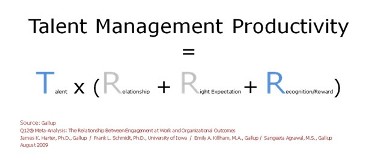Tomorrow, recruiters could be replaced by robots. “Science” is being put at the service of recruitment and it seems that some well-chosen algorithms and mathematical formulae could supplant the work of humans. Nothing new, you will say, we’ve already seen tech breakthroughs a few times trying to intervene in evaluation of candidates: online personality tests, ultra-sophisticated CRMs, "ATS", in short, the market for automating recruitment arouses great interest and investments in research and development. Today we’ll speak about predictive technologies in the service of recruitment.
A recent article in “The Economist” http://www.economist.com/news/business/21575820-how-software-helps-firms-hire-workers-more-efficiently-robot-recruiters reports that the Evolv professional recruitment services firm http://www.evolvondemand.com/ offers “big data” solutions and algorithms customized for large companies. So if your company is a large consumer of candidates you would be well advised to model your selection process to make it a super powerful skimming tool. So we learn that candidates that make the best employees most often use Chrome and Firefox browsers at the expense of Explorer and Safari (which are slower and therefore lower your staff’s productivity) or that those who respond more slowly to aptitude tests are less efficient. It also appears that call centre agents that have a dubious past (civil or criminal record) or a chaotic career path show more loyalty and perform better for fear of losing their jobs. Troubling. Capitalizing on the fear of losing their jobs to increase employee loyalty makes me think of the old ultra patriarchal or almost dictatorial cultures. Is the problem in recruitment, employees' profiles or in the type of job offer and organization? Would it perhaps be better to automate cooking hamburgers rather than automating the selection of the individuals who grill them? It begs the question…
Another interesting fact is that employees who join more than 2 social networks tend to quit their job more rapidly. With suddenly having hundreds or thousands of social network friends, it’s a strong bet that the individual will be in contact with more job opportunities. QED. If I were a candidate, I would therefore limit myself to only disclosing a single social network and not mention my other identities… “Big data" has its limits. As evidence there is this company whose software rejected a large number of qualified candidates because they did not have the desired job title. The problem was that this company was the only one that used this name. But the software didn’t know this!
A desire to dehumanize recruitment is not new bit it’s no less true that “big data” is not the end but the means (according to Shally Sherpel @shally). Although it can work for high volume recruitment – call centres, manual or hourly workers, etc. – it seems less effective for professionals or the sales trades. Not surprising.
Don’t think that I am resisting the advances of “science” in the service of human resources management. I am quite partisan on the use of predictive technologies to study the behaviour of candidates just as a consumer market would be analyzed, with a marketing and strategic approach to information management. What are the trends and patterns of use of employment websites? What are the rates for visiting the career sections of corporate websites? What schools do our best employees come from? Where do our candidates live? What means of transport do they use? etc… Beyond collecting data, it’s necessary to know how to analyze and explain it and put it into perspective with the company’s business plan. Again it’s necessary to know where we’re going and what we want to accomplish. In all cases, it takes a human brain to interpret it. “Big data” analyses data from the past without bringing new approaches or a different vision. It’s like as if it was based on yesterday’s data to reproduce the same pattern today. I don’t see how only modelling past data is going to improve performance. What’s essential is to analyze current data to identify trends that will help us predict the future.
Finally, to put it as a mathematical formula, here is a formula used by the Gallup firm http://strengths.gallup.com/private/Resources/Q12Meta-Analysis_Flyer_GEN_08%2008_BP.pdf to determine your employee’s productivity and level of commitment:

Talent x (Relationship + Right Expectation + Recognition/Reward)
Personally I find the formula much more inspiring since it involves a culture of leadership and managers who are listening. More human and a long term approach, don’t you think?